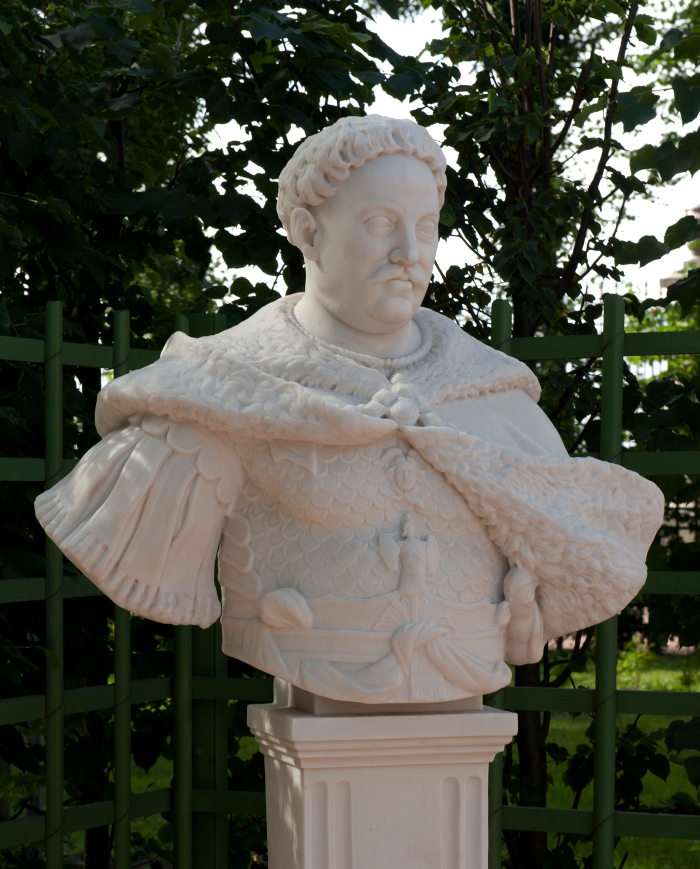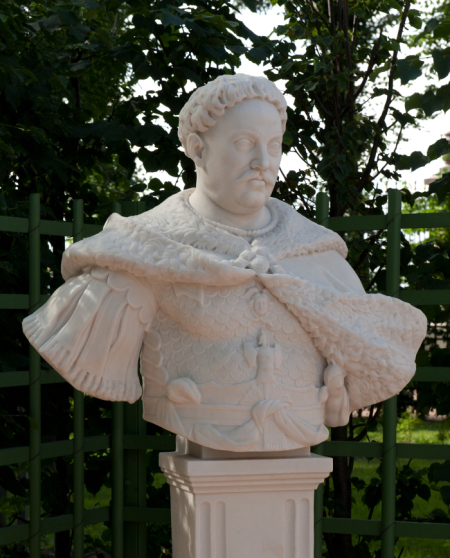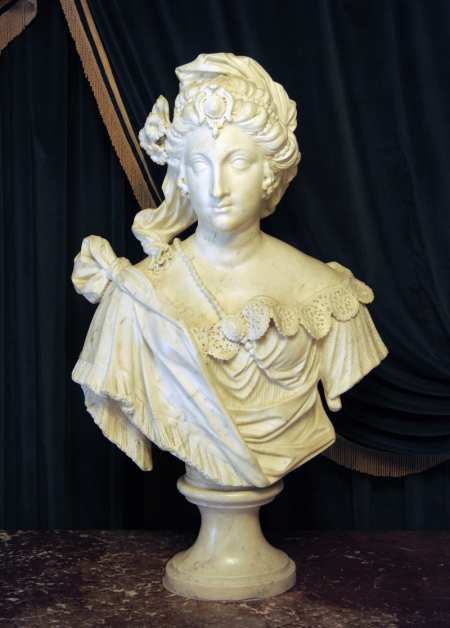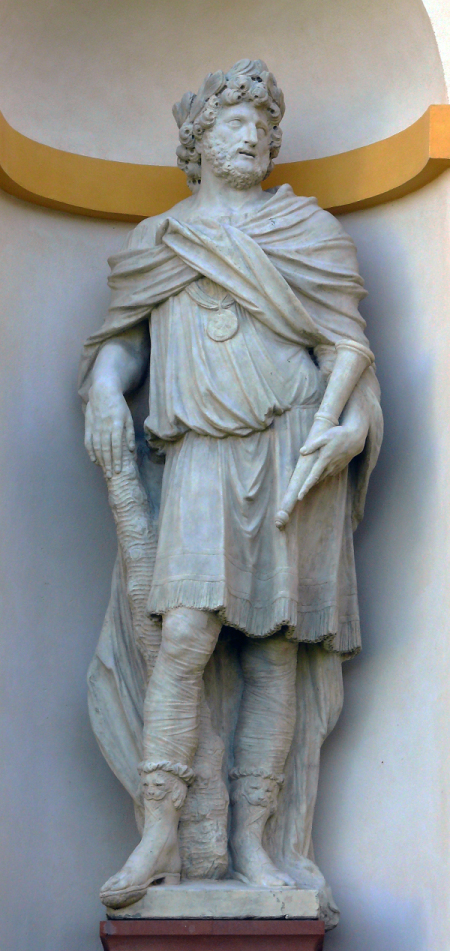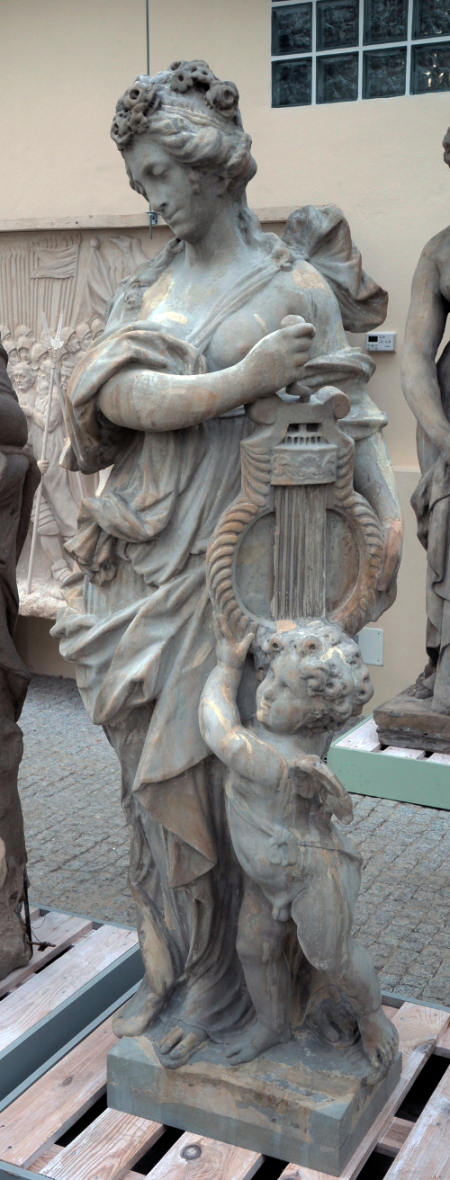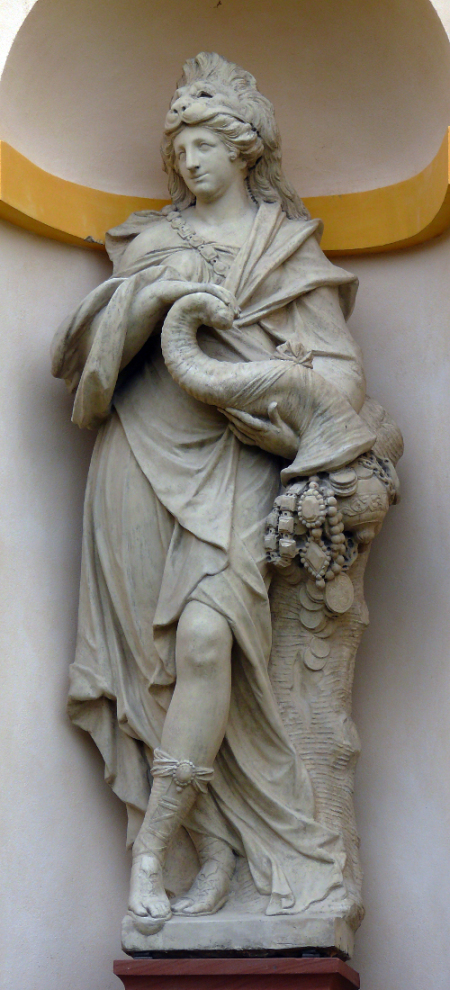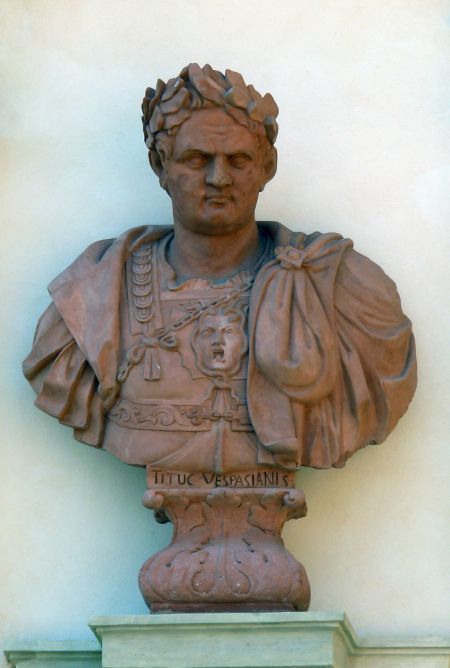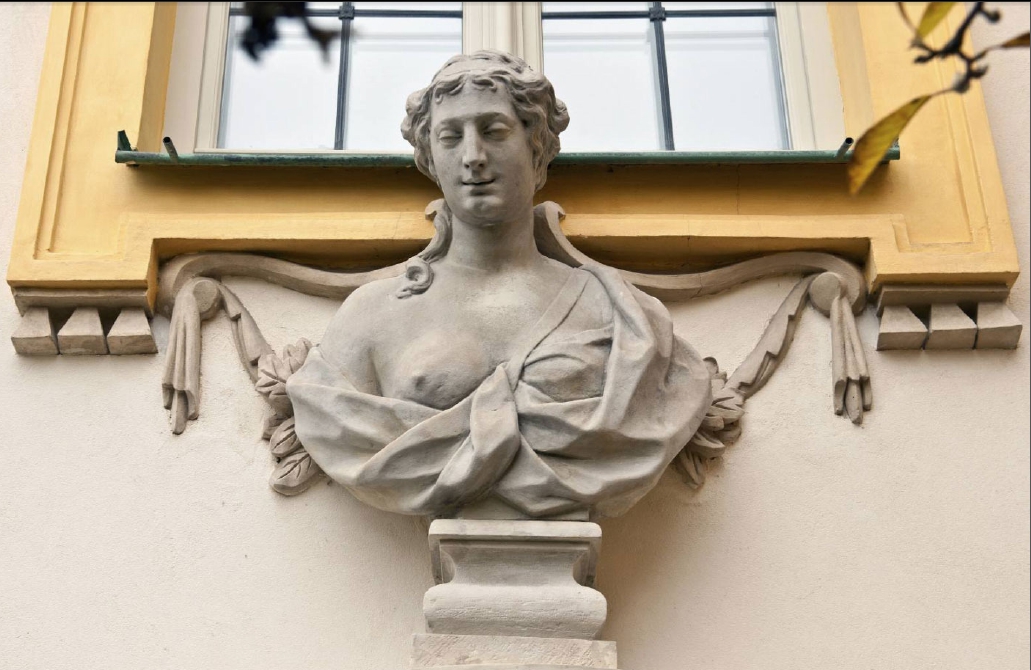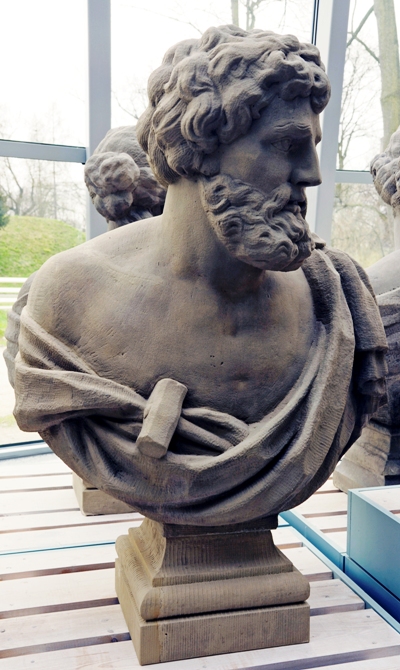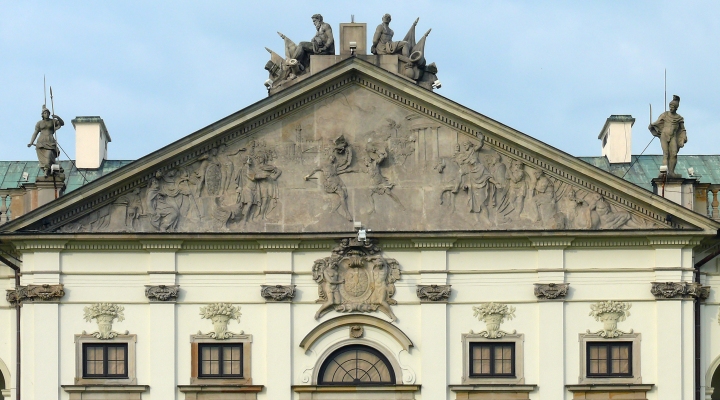Dutch sculptural imports for King Jan III (1681-1694)
Michał Wardzyński
The sculptural decoration of King Jan III Sobieski’s villa and garden in Wilanów was, in the light of archival sources from the late 17th and 18th centuries, one of the largest and undoubtedly most interesting ensembles of this kind in the Polish-Lithuanian Commonwealth and the entire Central Europe. Nevertheless, the circumstances of its creation, its place and role in the artistic and ideological programme of the residence, as well as its reception in the art of the Crown, Lithuania and Ruthenia are still insufficiently researched. Thanks to the ground-breaking archival discoveries of Juliusz Starzyński and the subsequent long-term work of Mariusz Karpowicz, Wojciech Fijałkowski and several other researchers, its partial reconstruction became possible. Attention was also given to Italian, Tessinian and French formal and stylistic patterns from the Roman circle of Bernini and Algardi and the classicising, academic art court of Louis XIV in Versailles and Louvre. Only the most important artists in the service of King John III have today their individual research monographs: Szwaner (Stefan Schwaner?) and Andreas Schlüter, with the latter being only hypothetically connected with the Wilanów works.
The newest source discoveries presented in recent years by Kevin E. Kandt, Guido Hinterkeuser and the author of these words shed entirely new light on the origins and Western European connotations of the king’s sculptural commissions during works on the second and third phases of the expansion of the royal residence between 1681 and 1694. The successful completion of this ambitious undertaking was hugely due to the efforts of the king’s diplomatic agent in the Spanish Netherlands and the Netherlands, the influential Spanish merchant Francisco Mollo (who held this position from 1679 to 1696), while the official recipients of the shipments from Amsterdam, The Hague and Antwerp were the two royal postmasters in Gdańsk (Danzig): Caspar Richter and Bartholomeo Sardi. Transports arrived by sea to the port on the Motława River, where, after being reloaded onto barges, they were shipped up the Vistula River to Warsaw, directly to the Wilanów harbour.
Bartholomeus Eggers of Amsterdam as well as Artus II and Thomas II Quellinus of Antwerp and Copenhagen. Marble, sandstone and plaster statues
Between March 1681 and June 1690, the correspondence between Agostino Vincenz Locci, who was in charge of the expansion of the Wilanów royal seat, Richter and the king, customs records of the port of Gdańsk (Danzig) and the notarial sources of Amsterdam record the importation of at least twenty-five carved Carrara marble sculptures from the Netherlands and the Spanish Netherlands. These included a set of statues and herms of ancient deities (including Roma Triumphans, Apollo – two pieces, Juno, Pallas Athena, Venus, Bacchus and Mercury), portrait busts of the royal couple, sphinxes and bas-reliefs, as well as groups of sculptures depicting children, creating personifications of Asia and Africa, among others. Their presence in the palace interiors and the garden is confirmed by a small number of descriptions and accounts from the end of the 17th century and by the fundamentally important inventory drawn up there of the works and other movable property seized in early August 1707 by the troops of the Russian Tsar Peter I and taken to St Petersburg. The only artefact from this group preserved to this day in Wilanów is a magnificent bust of an undetermined ancient goddess, formerly identified as Queen Maria Kazimiera d’Arquien de La Grange, and wrongly linked to the well-known Parisian academic sculptor Jacques Prou the Younger, who actually represented a very different classicising style. There are five original statues in the Summer Garden in St Petersburg: Pallas Athena/Fortitudo (?), Ceres (?)/Prudentia and Venus (?) as well as busts of monarchs, the storage location of the others is unknown. The royal commission also included at least nine (seven survive to this day) figures of muses and personifications of four concepts: Honos, Magnanimitas, Splendor nominis and Valor/Fortitudo, all forged from Gotland sandstone available in the Netherlands.
Based on the above-mentioned archival material and knowledge of Dutch and Flemish sculpture of the 2nd half of the 17th century, the composition in question can be split between at least three authors. The first statues were probably supplied in 1681 by the well-known Amsterdam sculptor Bartholomeus Eggers (c. 1637–1692), student of the Antwerp-based Pieter I Verbruggen, then member of the atelier of Artus I Quellinus, famous for his monumental sculptural decoration of the Amsterdam Town Hall (1645-1667), employed individually in the 1650s–80s mainly for the most prestigious commissions of the Dutch aristocracy in The Hague, South Holland, North Holland and Friesland.
Crucial to his career, however, were the commissions made by two highly influential, allied and closely co-operating patrons in politics, economy and culture of the German Reich at the time: prince Mauritz Johan von Nassau-Siegen (1604–1679) to The Hague, Kleve and Sonnenburg (pres. Słońsk, Poland) and the Elector of Brandenburg Friedrich Wilhelm von Hohenzollern (1620–1688) to Berlin and Oranienburg.
The white-marble figures of Pallas Athena, Apollo and other ancient deities, brought to all these places mainly during the years 1681-1682, are the closest analogues for the figure of Roma Triumphans and some of the aforementioned deities delivered at the same time via Gdańsk (Danzig) to Wilanów. At the end of 1687, Francisco Mollo received from Eggers four more marble child figurines.
Moreover, there was a composition of at least 13 plaster busts of Roman emperors, which arrived in Wilanów from Amsterdam, as the latest one, in 1682, and of which only three sculptures have survived to this day: Tiberius, Vespasian and Titus, located on the garden elevation of the south gallery. All the other busts were replaced in the 18th or already in the 19th–20th century by artistically weaker copies. The Wilanów busts are most likely replicas of models of a 12-sculpture series of analogous busts made before 1674 by Eggers for the Great Elector. In addition, the collection of the Rijksmuseum in Amsterdam includes four identical portraits of Julius Caesar, Caligula, Marcus Salvius Oton and Domitian, cast in tin-lead amalgam at the renowned Dutch art foundry Barent de Rijp, which collaborated with the artist.
The second part of the royal commission was won by two representatives of the then most prominent Antwerp sculptor family Quellin/Quellinus: Artus II (1625–1700) and his son Thomas II (1661–1709), active in the 1680s and early 1690s in Antwerp, at the royal court of the Oldenburg dynasty in Copenhagen and in the free Reich city of Lübeck, seat of the Hanseatic League. The list of archivally confirmed works of the Quellinus in Wilanów include the two white-marble signed groups of sculptures depicting children, which have not survived to this day, while the other figures, namely the muses, a pair of royal busts and statues of the other mentioned ancient deities and personifications, are attributions established in the international and Polish literature. The very high class of the sculptures in question places them among the best creations of the Flemish sculpture of the late 17th century. A comparative analysis of the features and details of the Wilanów figures, which are in line with parallel sacred, sepulchral and secular works created in the Spanish Netherlands (Antwerp, Herkenrode/Hasselt, Hemiksem/Wouw), Denmark (Copenhagen, Aarhus) and the northern countries of the German Reich (Lübeck, Güstrow) by the two sculptors, confirms earlier findings by Hans Nieuwdorp, Mariusz Karpowicz and Sergej O. Androssov.
Barent de Rijp (Dronrijp, Doorijp) from Amsterdam and Delft. Garden tin and lead figures
We know from Locci’s and Richter’s correspondence with the king that between 1681 and 1684 at least 30 garden figures, made in the tin-lead amalgam casting technique that was very popular in the Netherlands at the time, arrived in Wilanów from Amsterdam via Gdańsk (Danzig). These included statues of ancient deities and heroes: Hercules, Flora, Apollo, Venus, Fortune, Mercury, satyr, Diana, as well as gladiators and dancers (four male and four female), which were then covered with gold leaf to imitate fire-gilded bronze/brass and set on stone plinths on both terraces of the garden. As many as 22 large child statues and at least a few small ones, then polychromed in grey to resemble the neighbouring stone and marble sculptures, have survived to this day. The last statues of deities and gladiators were taken away in 1793 or 1794 – probably to St Petersburg – by the Tsarist army ravaging the residences of the Potocki and Lubomirski families. Further fate of these works remains unknown. Research to date has focused on the presumed Gdańsk (Danzig) origins of these figures (the postmaster Caspar Richter himself was even erroneously considered to be the manager of the local foundry workshop) and the solution to the question of their origin came with a careful analysis of archival sources from Gdańsk (Danzig) and the Netherlands.
In the 17th century, it was in the Republic of the United Provinces/Netherlands that the production of tin-lead sculpture remained at the highest level and leading artists such as John van Nost the Elder of Mechelen (d. 1729) or Andries Carpentière (ca 1677–1737) successfully transferred it in the 4th quarter of the 17th century to England and London. The rival Versailles centre, led by Jean-Baptiste Tuby (1635–1700), mainly catered for the needs of the court of Louis XIV. The most important workshop specialising in this technique – favoured primarily in secular sculpture for gardens and cabinets - was the one led by Johan Larson in Delft and later in Amsterdam, which was taken over in the 1670s by Barent de Rijp (Dronrijp, Doorijp). It was there that plaster copies of ancient originals and works by François Duquesnoy, imported from Rome and Italy, were used to design a series of statues of ancient deities, heroes and children (kept in the putti fiamminghi type). The company offered entire sets of such figures, which from the 2nd to the 4th quarters of the 17th century reached, among others, gardens in several places in the Netherlands itself, in the facilities of the Grand Elector in Berlin, the electoral couple Ernest August and Sophie in Herrenhausen near Hannover, Alexander von Dohn in Schlobitten in East Prussia (pres. Słobity, Poland), and then also the Palacio de Fronteira near Lisbon and Copenhagen. The royal commission for Wilanów thus coincided with the peak in popularity of this type of sculpture throughout Western Europe.
Other lead and plaster sculptures from the ateliers of Larson and de Rijp were also commissioned by representatives of the Crown magnate circle of the time, including Stanisław Herakliusz Lubomirski and Andrzej Morsztyn. In the above-mentioned venues, as well as in museums such as, for example, the Rijksmuseum in Amsterdam and the Johann Gottfried Herder Museum in Morąg, we can find several dozen figures and child figures preserved to this day; their repetitive poses combined with common formal and stylistic features allow a fairly precise reconstruction of the design of the composition and the appearance of most of the individual deity figures that were once placed in Wilanów. The gold leaf cover has also been preserved in Herrenhausen.
Revealing the presence in Wilanów of some 80 statues and bas-reliefs commissioned between 1681 and 1694 by King Jan III Sobieski from Amsterdam, Antwerp and Copenhagen, made by four leading Dutch and Flemish sculptors of the 4th quarter of the 17th century: Bartholomeus Eggers, Barent de Rijp, Artus II Quellinus and Thomas II Quellinus, completely changes the previous picture of the king’s artistic patronage in the field of sculpture. It also provides a better understanding of the reason for entrusting the position of court sculptor to Szwaner (Stefan Schwaner), brought from Gdańsk (Danzig) and representing the same classicising, Flemish style; it also explains the participation of the talented Andreas Schlüter in works for the court. These royal commissions should be considered in a much broader cultural and geographical context, bearing in mind the primacy of this trend of Western European sculpture in the 2nd half of the 17th century and the early 18th century, on all the royal courts and in Baltic states, from Copenhagen and Schleswig in the west to Turku, Reval and Riga in the east, including Gdańsk (Danzig) and Elbląg (Elbing).
Instead of the sculptural works of Rome and Versailles, which had hitherto been proposed as the main sources of inspiration, it was Amsterdam, The Hague and Antwerp that came to the fore, together with, indirectly, also Berlin, where the works of Eggers, Larson and de Rijp, which were models for the Wilanów commissions under discussion, had previously appeared in a distinctly Classicist style. In the field of sculpture, the Roman antiquity, hitherto mentioned as the main source of inspiration in Wilanów and for King Jan III, turns to be have a dominant Dutch (not Italian) features, which depended, for the institutional, political and social reasons, on the prevailing fashion of the Netherlands at the time, promoting strictly expressive ancient “republican” style, which at the same time drew extensively on modern Venetian models (Palladio, Scamozzi). In this case, the cultural and artistic transfer was carried out through plaster copies and prints showing ancient monuments. The phenomenon of the reception of the Wilanów ensemble in the art of the Polish-Lithuanian Commonwealth at the end of the 17th century and in the 18th century, which has not yet been addressed by researchers, now requires a separate study.
